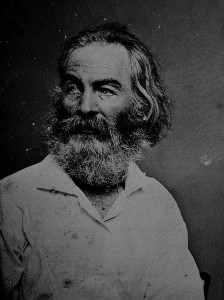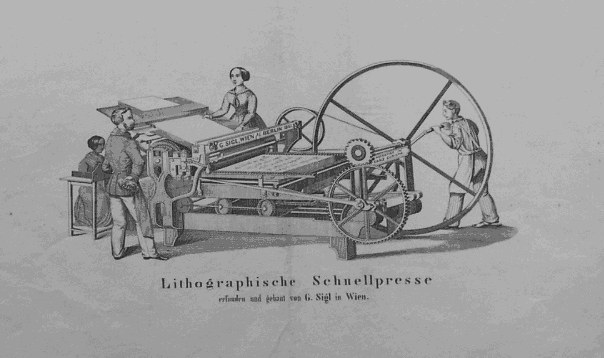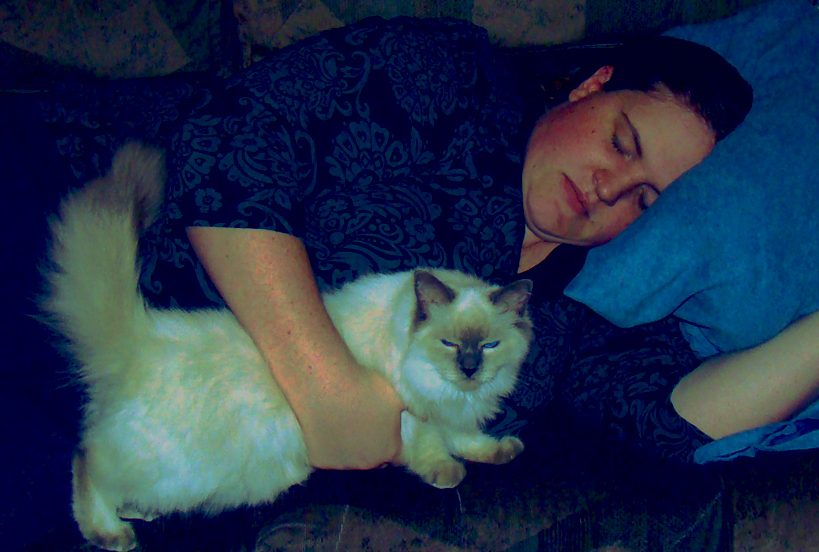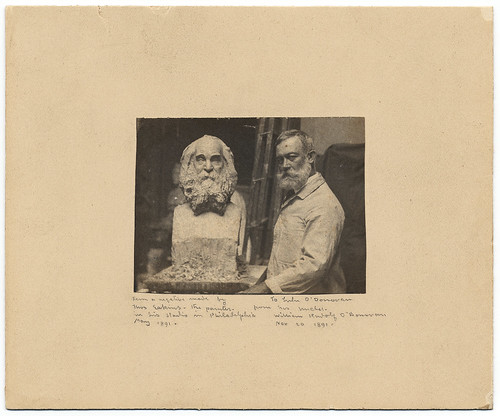
Close-up of Raw Wool
Pre-Civil War, cotton was the primary material used to create clothing. The product was relatively cheap (labor cost, obviously, was not an issue) and there were not tariffs on the material, keeping production overhead relatively low. With the onset of the Civil War, however, wartime activity cut numerous supply lines to the North, which dealt primarily with manufacturing. One of these supply lines happened to be the supply of raw cotton that Northern manufacturers relied upon to produce clothing.

With these limitations in place, Civil-War America had “a textile industry which could not get a fraction of all the cotton it wanted, [so it] turned increasingly to the production of woolen fabrics (here likewise government requirements had skyrocketed), and the market for raw wool was never livelier” (Catton 159). The changes in manufacturing also brought on changes in clothing styles during the early-to-mid 1860s. The standardization of men’s clothing became a movement in the clothing industry in the 1860s, whereas in the 1850s men had a certain amount of latitude with the way they dressed.

Walt Whitman himself participated in this change in fashion: “Whitman dressed differently from before. That was the first thing John Townsend Trowbridge noticed when he visited Whitman in Washington late in 1863” (Reynolds 432). What Trowbridge noted was the transformation in Whitman’s style of clothing from the rebellious, colorful “loafer” of the 1850s, to the more somber, reserved Whitman of the 1960s. Whitman’s transformation in fashion also led to a conflict in the perception of the poet by his friends and admirers: “As for Burroughs’s claim that Whitman was no rough but instead clean and wholesome, it had some validity with regard to the public, postbellum Whitman, with his simple woolen suits and sparkling white linen shirts” (460). This transformation in Whitman’s style, and the fashion of the period in general, was not a coincidence or the whim of fashion, “changing clothing styles signified larger changes in society and culture” (432). The weak government of the antebellum period transformed itself into a powerful agent in America’s culture and Whitman became a part of the “war machine” during the decade he spent in Washington, D.C.. He was now the good grey bard.
However, this was not the only connection that wool had to Whitman’s life. Even years after the initial effects of the Civil War (roughly twenty years, to be exact) wool was still having an impact on Whitman’s life because of where he lived—Camden. Right across the river from Philadelphia, a major industrial hub, Camden itself benefited from the increased need for wool.

The Camden Woolen Mills, which shared a building with a dying factory, were located at 611 Cooper Street and were just one example of the numerous businesses dealing with worsted wool in Camden, NJ in the 1880s and 1890s, towards the end of Walt Whitman’s life. With the increased popularity and demand for woolen goods, however, came the “threat” of foreign competition. During the 1880s and 1890s, one of the most hotly contested actions of government interacting with industry was the debate over tariffs on wool. American wool was considered expensive and of a poorer quality than that which could be obtained through trade with foreign producers of wool. The “average rate of duty on manufactures of woolens in 1887 was 67.21 per cent” (New York Times Sep 24, 1888), whereas under the proposed bill it would be lowered to a uniform rate of 40 percent. Opinions varied greatly as to the effects of this lowered tariff, arguing that it would destroy domestic industry (New York Times Mar 7 1883), or that it would prove beneficial to consumers because of the lowered cost of production (New York Times Sep 24, 188) and prove to cause little harm to domestic industry (Town Topics July 26 1888). By January of 1890, two years before the death of Whitman, the issue was finally being weighed by the Committee of Ways and Means in the House of Representatives. The decision of the Ways and Means Committee lead to the creation of the McKinley Tariff Act.
Works Cited
Catton, Bruce. The Civil War. New York, NY: The American Heritage Library, 1988.
Cohen, Phil. “611 Cooper Street, 1920s.” DVRBS.com. <http://www.dvrbs.com/camden-streets/CamdenStreets/Cooper-605-1920s-1b.jpg>
cyphs-stockup. “Cotton Bowl.” Deviantart.com. 17 Oct 2003. <http://cyphs-stockup.deviantart.com/art/Cotton-Bowl-3475420>
“Free Wool Demanded.” New York Times 3 Jan 1890: 5. Print.
Gardner, Alexander. “Walt Whitman.” Alderman Library, University of Virginia, 1863. <http://www.whitmanarchive.org/multimedia/images/large/012.jpg>
gatagataa-no. “Wool.” Deviantart.com. 25 Sep 2005. <http://gatagataa-no.deviantart.com/art/Wool-22953533>
“Opinions on the Tariff.” New York Times 7 Mar 1883: 2. Print.
Reynolds, David S.. Walt Whitman’s America: A Cultural Biography. New York, NY: Vintage Books, 1996.
“Saunterings.” Town Topics 26 July 1888: 12. Print.
“Woolen Goods and Their Consumers.” New York Times 24 Sep 1888: 5. Print.
November 18th, 2009
Though not entirely directed towards Whitman criticism, my bibliographic essay concerning Edith Wharton does make use of the influence that Whitman had on Wharton’s work. One article in particular speaks to the Whitmanian influences on the sexuality as depicted in Summer. However, there is no reason that it should have to stop there.
This bibliographic essay covers roughly 27 years of Wharton criticism concerning the New Woman and it’s failures as presented in Summer, The House of Mirth, and The Age of Innocence.
Download Bibliographic Essay Here
November 4th, 2009
A particular subject that has remained interesting to me since I was introduced to the fact that Edith Wharton wrote down a plan for a Whitman essay is the fascination that she had with him. As can be seen in the Sherry Cenzia article “Women as a Theme in Whitman’s Writing” in Walt Whitman: An Encyclopedia, Wharton wasn’t the only woman who reacted strongly to Whitman’s writing and “arrogant” persona: “ Interestingly, a refrain runs through women’s responses to Whitman, at least from the late 1850s to the 1920s. That refrain is the valorization of Whitman’s inscription of the strong ‘I’” (Cenzia 798). Why would this persona put forth by Whitman delight women so much? This may lie in the fact that in the public sphere, women didn’t have a strong sense of self or a definitive identity. Along with this identification with Whitman’s poetic persona, some women embraced and appreciated Whitman’s approach to sexuality and sexual identity, Wharton was among them. It is mainly in Wharton’s approach to her characters’ sexualities that she is most similar to Whitman. However, unlike Whitman, Wharton, in many instances, punishes her characters for their attempts to gain sexual/personal freedom, using the society to push them back into their proper places, such as Charity Royall in Summer.
As Sherry Cenzia states, Whitman is not explicitly a feminist, even though many early feminists cited him as inspiration. Perhaps it is this lack of feminist/gender perspectives within Whitman’s poetry that I find the most difficult in his work. Usually I use this as a means to get into a work I’m not familiar with, but in Whitman’s poems, this isn’t a possibility as much.
Works Cited
Cenzia, Sherry. “Women as a Theme in Whitman’s Writing.” Walt Whitman: An Encyclopedia. New York, NY: Routledge, 1998. Print.
October 7th, 2009
Hello All,
First off, I’d like to thank Jim Groom for working so hard to get the poems for the annotations posted so we could use them to present on our explications. Thank you for all your hard work!
Secondly, I went through the poems and noticed that because of WordPress’ lovely coding, linebreaks don’t work. So what I will do is use the good old quoting method to separate the stanzas. Between separate stanzas you will see “/” to indicate a break. Tonight I’m going to go through the poems and make sure the line breaks and grammar match our Library of America edition so that it won’t be off when anyone goes to annotate.
If you have any questions, feel free to email me or message me on here.
Thanks again to Jim Groom. Go Tech Team! (I’m tired, it’s been a day.)
Jamie
October 5th, 2009
Having completed my explication previous to reading Betsy Erkkila’s excerpts from Whitman the Political Poet, I was surprised to find that my findings in the poem, that the speaker of the poem begins the last section of the poem believing in the natural and ends this section with a prayer to a specific god, mimicked Whitman’s own religious transformation. While it isn’t necessarily a safe theoretical move to connect Whitman with the speaker of the poem, there is a definitive correlation. Whitman’s all inclusive, “every man,” attitude in the universalistic-nature of religion faded towards the end of his life and he focused instead on a more conservative religious view:
Physically paralysed and politically disillusioned, Whitman moves in “Prayer of Columbus.” as in “Passage to India.” toward a more traditional religious faith. Whereas the early Whitman had consistently railed against those religion systems that postulated a divine authority outside the self, in “Prayer of Columbus,” he utters his own prayer, yielding the authority of self and the command of the democratic ship to the divine “Steersman” in the sky. The gesture measures the distances between the early and late Whitman and the extent of his disillusionment with America’s experiment in democracy. (Erkkila 283-4)
Keeping this in mind, here is an excerpt from my extensive (11 pages extensive) explication. Note: the poem is 65 lines long, a 4-5 page explication could not have been done.
The speakers generalized inclusivity is short-lived, however, because in the next stanza America is separated from the rest of the world:
The measur’d faiths of other lands, the grandeurs of the past,
Are not for thee, but grandeurs of thine own,
Deific faiths and amplitudes, absorbing, comprehending all,
All eligible to all. (ll. 48–51)
Related undoubtedly to the apparent lack of religion in the poem thus far, the speaker clearly delineates between American’s “religion” and the organized religions of the rest of the world in this stanza. The line “Are not for thee, but grandeurs of thine own” (l. 49) lends itself to the believe in the power of nature, like the imagery of the third section creates an impression of. The “religion” of nature excludes no one—“All eligible to all” (l. 51)—once again introducing inclusivity.
However, the last part of the poem completely deviates from this pattern of being all encompassing and singles out the poet in a relationship with a particular deity:
The fifth stanza of the poem, rather than leaving the reader with the previous imagery of fecundity, turns into a prayer between the speaker and an unidentified god-figure. I say unidentified because, as can be seen earlier in section four, the speaker has by-and-large rejected traditional formalized religion. Rather than the “scheme” being the sole controlling factor in the journey towards the idea, the speaker of the poem seems to have a change of heart:
Give me O God to sing that thought
Give me, give him or her I love this quenchless faith,
In Thy ensemble, whatever else withheld withhold not from us,
Believe in plan of Thee enclosed in Time and Space,
Heath, peace, salvation universal. (ll. 57–61)
This change from the language of the traditional “Muse” to a formalized “God” shows a change in the speaker of the poem that isn’t fully explained in the four sections of the poem. Is this “God” that the speaker addresses a means of speaking to the force of nature that is atypical? Or is this one of the many incongrueties of the poem as a whole?
It is because of these incongruities (this contradictory stance on religion only being one) that the poem generally fails to impart the reader with any sense of meaning.
While this may not be a radical revelation, I find it to be reassuring. I have never worked closely with any Whitman texts before, so seeing that my reading is not completely off-target is fortifying, to say the least.
Though I generally have a difficult time connecting myself to the criticism of Whitman’s works, Erkkila’s article seemed to be more accessible than a majority of the research we’ve read in the class. Perhaps it’s the connection with the historical that I find to be the key to making Whitman make sense, but that’s neither here nor there.
Erkkila, Betsy. Whitman the Political Poet. New York, NY: Oxford University Press, 1989. Print.
Whitman, Walt. “The Song of the Universal.” Walt Whitman: Poetry and Prose. Ed. Justin Kaplan. New York, NY: The Library of America, 1996. Print.
September 30th, 2009

The 1855 Portrait of Walt Whitman (Daguerrotype Reproduced by Lithography) by Mathew B. Brady
Lithographing Kronos, Zeus his son, and Hercules his grandson,
Buying drafts of Osiris, Isis, Belus, Brahma, Buddha,
In my portfolio placing Manito loose, Allah on a leaf, the crucifix
engraved,
With Odin and the hideous-faced Mexitli and every idol and image,
Taking them all for what they are worth and not a cent more,
Admitting they were alive and did the work of their days,
(They bore mites as for unfledg’d birds who have now to rise and fly
and sing for themselves,)
Accepting the rough deific sketches to fill out better in myself,
bestowing them freely on each man and woman I see,
(“Song of Myself” 41.9–19, p 73–4 in the Library of America edition of Walt Whitman: Poetry and Prose, 1996)
As is illustrated throughout the David S. Reynolds cultural biography of Walt Whitman, printing and the publishing business was a significant factor in Whitman’s life, and in the lives of many people. He states, “Printing and distribution techniques improved immensely over the early decades of the nineteenth century” (Reynolds 45). For this reason, my image gloss is focusing on the word “lithographing” or, more specifically, lithography. From the Greek, lithography literally means to write on stone, which is quite descriptive of the process itself. Lithography is a form of printing that originally utilized stone in order to make prints, but later moved to metal plates, which were more economical. Invented by Alois Senefelder in 1798 in Austria (Jung para 2), lithography works through a method of ink-repulsion. Using an oil/ink resistant medium, such as gum arabic, wax, or other pliable substances, the image is drawn onto the stone or plate by the artist. Once the medium to repel the ink has set, the artist uses a large roller to spread ink onto the stone. The ink will only remain where there is a clear surface, free from the repelling medium. From here, the stone or plate is pressed to the paper and a print is created. Often the print was created in several stages in order to add depth to the image. While this process may seem primitive, “by1848 the process had been refined to the point that it was possible to print 10,000 sheers per hour” (Jung para 2). Lithography was/is considered an art in itself since it is not merely a matter of taking an image and Xeroxing it, but the image had to be recreated by hand. For this reason, mainly graphic images were printed using the lithographic process. Reynolds explains to the reader that “This [lithography] was how the famous 1855 portrait of Whitman would be produced” (Reynolds 282).
The fact that lithography was used to recreate images lends an interesting interpretation to this particular passage from “Song of Myself.” In creating lithographic images of these old gods and goddesses and gods of current religions, the speaker—the “I” as it is referred to in most articles—is making these images of intangible, ethereal beings, tangible and reproducible. In doing this, the speaker brings them down to the level of humanity and makes them available to everyone, “bestowing them freely on each man and woman [they] see” (Whitman 41.19). Essentially, the speaker of the poem takes the awe and fear out of faith and makes it something to be dealt with on a human level.

Lithographic Printing Press
Works Cited
Brady, Mathew B. “Portrait of Walt Whitman.” 1855. 15 Sep 2009. < http://www.usc.edu/schools/annenberg/asc/projects/comm544/library/images/477bg.jpg>
Jung, Marshall. “History of Lithography.” 19 Dec 2003. cartage.org, Web. 15 Sep 2009. <http://www.cartage.org.lb/en/themes/arts/graphicartists/Printmakingmethods/Planographicmethods/HistoryLithography/history.htm>.
Reynolds, David S. Walt Whitman’s America: A Cultural Biography. New York, NY: Vintage Books, 1996. Print.
Siǵl, G. “Lithoġraphische Schnellpresse.” Web. 15 Sep 2009. <http://www.jaapkruijff.net/uk/litho/machine.gif>
Whitman, Walt. “Song of Myself.” Walt Whitman: Poetry and Prose. Ed. Justin Kaplan. New York, NY: The Library of America, 1996. Print.
September 16th, 2009

All page citations are from The Library of America publication of Whitman: Poetry and Prose (1982).
I am satisfied….I see, dance, laugh, sing;
As God comes a loving bedfellow and sleeps at my side all
night and close on the peep of the day, (p. 29)
I am the poet of the body,
And I am the poet of the soul.
The pleasures of heaven are with me, and the pains of hell
are with me. (p. 46)
I’m slightly unusual in the fact that I could not find six consecutive lines within “Song of Myself” by Walt Whitman. Many things I find myself agreeing with and finding resonances with are quickly followed with sentiments that appear, at least to me, very different from the previous lines. Whitman, at least in “Song of Myself,” is the poet of contradictions. He is everywhere and nowhere at once. The lines I selected are very resonant with me because napping is a time when I feel connected to my body, but also to the world of dreams, which is all soul. The lines “As God comes a loving bedfellow and sleeps at my side all/ night and close on the peep of the day” (29), connect to my picture because I believe the presence of God can be seen no clearer than in the faces of animals. Pictured is my kitten, Heathcliff (named after the Byronic Hero of Wuthering Heights), who sleeps with me everytime I lay down to nap or sleep for the night and is fiercely protective. I feel like he is my guardian angel of sorts.
If the comment link below says that comments are closed, they aren’t. Here is a link to respond to this post:
http://jmgibbs.lookingforwhitman.org/2009/09/07/song-of-jamie/#respond
September 7th, 2009
From The Commons on Flickr. A bust of Walt Whitman made from a negative done by the painter Thomas Eakins.
“To Lulu O’Donovan from her uncle William Rudolf O’Donovan, Nov. 20, 1891”

Original photos to come!
August 22nd, 2009







